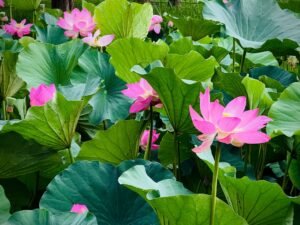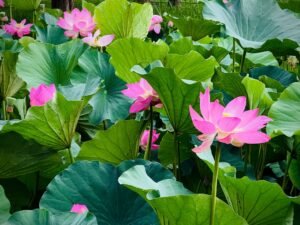

Enhancing Your Norwegian Vocabulary through Daily Conversations
Learning a new language can be a challenging but rewarding endeavor. One of the key components of language learning is vocabulary acquisition. The more words you know, the better you will be able to communicate and understand the language. In the case of learning Norwegian, enhancing your vocabulary is essential to becoming fluent in the language.
One effective way to improve your Norwegian vocabulary is through daily conversations. By engaging in regular conversations with native speakers or fellow learners, you can expose yourself to new words and phrases in a natural and practical context. This article will explore the benefits of daily conversations in improving your Norwegian vocabulary and provide tips on how to incorporate them into your language learning routine.
Table of Contents
ToggleThe Benefits of Daily Conversations in Improving Your Norwegian Vocabulary
Daily conversations offer several benefits when it comes to improving your Norwegian vocabulary. Firstly, they provide you with exposure to authentic and natural language use. Unlike textbooks or language learning apps, conversations allow you to encounter real-life situations and colloquial expressions that may not be covered in formal language materials.
Additionally, daily conversations help you practice and reinforce what you have learned. By using the words and phrases you have acquired in a conversational setting, you are more likely to retain them in your long-term memory. This active engagement with the language helps solidify your understanding and usage of new vocabulary.
Furthermore, daily conversations provide an opportunity for immediate feedback. When speaking with native speakers or fellow learners, you can receive corrections and suggestions on how to improve your vocabulary usage. This feedback loop is crucial for refining your language skills and ensuring that you are using words correctly and appropriately.
Incorporating Norwegian Classes into Your Daily Routine
In order to enhance your Norwegian vocabulary through daily conversations, it is important to incorporate Norwegian classes into your daily routine. Attending regular classes will provide you with structured learning opportunities and guidance from experienced instructors.
To incorporate Norwegian classes into your daily routine, it is helpful to set aside dedicated time for studying and practicing the language. This could be in the form of attending physical classes at a language school or participating in online courses. By committing to a regular schedule, you can ensure that you are consistently working towards improving your vocabulary.
Taking Norwegian classes also offers several benefits. Firstly, it provides you with a structured curriculum that covers all aspects of the language, including vocabulary. Language schools often have well-designed courses that focus on building vocabulary through various activities and exercises.
Additionally, Norwegian classes offer opportunities for interaction and collaboration with fellow learners. By participating in group activities and discussions, you can practice your vocabulary in a supportive and engaging environment. This social aspect of language learning can be motivating and help you stay committed to your language learning goals.
Choosing the Right Norwegian Course for Your Learning Needs
When choosing a Norwegian course, it is important to consider your learning needs and preferences. There are several factors to consider when making this decision.
Firstly, consider the format of the course. Some people prefer traditional classroom settings, while others may prefer online courses that offer flexibility in terms of time and location. Think about what format would work best for you and align with your daily routine.
Secondly, consider the teaching methodology of the course. Different courses may have different approaches to teaching vocabulary. Some may focus on immersion and conversation-based learning, while others may incorporate more structured exercises and drills. Reflect on your preferred learning style and choose a course that aligns with it.
Lastly, consider the reputation and track record of the course provider. Look for reviews and testimonials from past students to get an idea of the quality of instruction and support provided by the course provider. A reputable course provider will have experienced instructors who are knowledgeable about the language and effective in teaching it.
Tips for Effective Learning in a Norwegian Language School
Once you have chosen a Norwegian language school, there are several strategies you can employ to get the most out of your learning experience.
Firstly, actively participate in class. Be engaged and ask questions when you don’t understand something. Take advantage of opportunities to practice speaking and listening in a supportive environment. The more you actively engage with the material and participate in class activities, the more you will benefit from the course.
Secondly, take advantage of resources provided by the language school. Many language schools offer additional materials and resources to supplement classroom learning. These may include online exercises, vocabulary lists, or audio recordings. Make use of these resources to reinforce your learning outside of class.
Lastly, practice regularly outside of class. Language learning is not limited to the time spent in the classroom. Set aside time each day to review and practice what you have learned. This could be through self-study, conversation practice with fellow learners, or engaging with native speakers through language exchange programs.
Building Your Vocabulary through Everyday Conversations with Native Speakers
One of the most effective ways to build your Norwegian vocabulary is through everyday conversations with native speakers. Engaging in conversations with native speakers allows you to learn new words and phrases in a natural and authentic context.
To find native Norwegian speakers to converse with, consider joining language exchange programs or online communities dedicated to language learning. These platforms connect language learners with native speakers who are interested in practicing their own language skills. By engaging in conversations with native speakers, you can learn new vocabulary and improve your pronunciation and fluency.
When engaging in conversations with native speakers, it is important to be an active listener and observer. Pay attention to how words are used in different contexts and take note of any new vocabulary that comes up. Don’t be afraid to ask for clarification or explanations when you encounter unfamiliar words or phrases.
Additionally, make an effort to use the new vocabulary you have learned in your conversations. Practice incorporating these words into your speech and try to use them in different contexts. The more you actively use the new vocabulary, the more likely you are to retain it and integrate it into your everyday language use.
Making the Most of Language Exchange Programs for Norwegian Learners
Language exchange programs are a valuable resource for Norwegian learners looking to improve their vocabulary through conversations with native speakers. These programs connect language learners with native speakers who are interested in practicing their own language skills.
To make the most of language exchange programs, it is important to be proactive and engaged. Take the initiative to reach out to potential language partners and set up regular conversation sessions. Be clear about your goals and what you hope to achieve through the language exchange.
During the conversation sessions, make an effort to practice your Norwegian vocabulary. Use the new words and phrases you have learned and ask for feedback on your pronunciation and usage. Be open to corrections and suggestions from your language partner, as this feedback will help you improve your language skills.
Additionally, consider diversifying your language exchange partners. Engaging with different native speakers will expose you to different accents, dialects, and vocabulary variations. This will help broaden your understanding of the language and expose you to a wider range of vocabulary.
Using Technology to Supplement Your Norwegian Learning
In addition to daily conversations and formal language classes, technology can be a valuable tool for supplementing your Norwegian learning. There are several technology tools available that can help enhance your vocabulary acquisition.
Language learning apps, such as Duolingo or Babbel, offer interactive exercises and games that can help reinforce vocabulary learning. These apps often incorporate spaced repetition techniques, which present words at intervals that optimize retention. By using these apps regularly, you can reinforce your vocabulary learning in a fun and engaging way.
Online dictionaries and translation tools can also be useful for expanding your vocabulary. When encountering unfamiliar words or phrases, look them up in an online dictionary to get a definition and example sentences. This will help you understand the meaning and usage of the word in context.
Additionally, consider using language learning websites and online forums to connect with fellow learners and access additional learning resources. These platforms often offer vocabulary lists, grammar explanations, and practice exercises that can supplement your classroom learning.
While technology can be a valuable tool for language learning, it is important to use it in moderation. It should not replace real-life conversations or formal language classes, but rather complement them. Use technology as a supplement to your learning and as a way to reinforce what you have learned in other contexts.
Strategies for Retaining New Vocabulary and Applying It in Conversations
Learning new vocabulary is only the first step; retaining it and applying it in conversations is equally important. Here are some strategies for retaining new vocabulary and incorporating it into your everyday language use:
1. Review regularly: Set aside dedicated time each day or week to review the new vocabulary you have learned. This could be through flashcards, vocabulary lists, or online exercises. Regular review will help reinforce your memory of the words and ensure that they stay fresh in your mind.
2. Use the words in context: Practice using the new vocabulary in different contexts and situations. This could be through conversation practice with native speakers, writing exercises, or even talking to yourself in Norwegian. The more you actively use the words, the more likely you are to retain them and integrate them into your everyday language use.
3. Create associations: Make connections between the new words and concepts you have learned and existing knowledge or experiences. This will help anchor the new vocabulary in your memory and make it easier to recall when needed.
4. Use mnemonic devices: Mnemonic devices are memory aids that help you remember information by associating it with something else. For example, you could create a visual image or a catchy phrase to remember a difficult word or phrase. Mnemonic devices can be especially helpful for retaining vocabulary that is challenging or abstract.
5. Practice in different contexts: Try to use the new vocabulary in a variety of contexts and situations. This will help you become more comfortable and confident in using the words in different settings. Practice using the words in both formal and informal conversations, as well as in written communication.
6. Seek feedback: When engaging in conversations with native speakers or fellow learners, ask for feedback on your vocabulary usage. This will help you identify any areas for improvement and ensure that you are using the words correctly and appropriately.
Measuring Your Progress and Celebrating Your Achievements in Learning Norwegian
As you continue to enhance your Norwegian vocabulary through daily conversations and language classes, it is important to measure your progress and celebrate your achievements along the way.
One way to measure your progress is by setting specific goals and tracking your progress towards them. For example, you could set a goal to learn a certain number of new words each week or to have a conversation entirely in Norwegian with a native speaker. By tracking your progress towards these goals, you can see how far you have come and stay motivated to continue learning.
Additionally, consider taking regular assessments or tests to gauge your language proficiency. Many language schools offer proficiency tests that can provide an objective measure of your language skills. These tests can help identify areas for improvement and guide your future learning efforts.
Finally, don’t forget to celebrate your achievements, no matter how small they may seem. Learning a new language is a challenging endeavor, and every milestone reached should be acknowledged and celebrated. Treat yourself to something special or share your achievements with friends and family who can offer support and encouragement.
In conclusion, enhancing your Norwegian vocabulary through daily conversations is an effective way to improve your language skills. By actively engaging with the language in real-life situations, you can expose yourself to new words and phrases, practice what you have learned, and receive immediate feedback. By incorporating Norwegian classes into your daily routine, choosing the right course, and utilizing technology tools, you can further enhance your vocabulary acquisition. With dedication, practice, and the right strategies, you can build a strong Norwegian vocabulary and become fluent in the language.
If you’re looking to enhance your Norwegian vocabulary through daily conversations, you might find this article on “How to Use ‘Det’ in Norwegian” helpful. It provides insights and examples on how to use the word ‘det’ correctly in different contexts. Check it out here!
FAQs
Why is it important to enhance your Norwegian vocabulary?
Enhancing your Norwegian vocabulary can help you communicate more effectively with native speakers, understand Norwegian media and literature, and improve your overall language proficiency.
What are some tips for enhancing your Norwegian vocabulary through daily conversations?
Some tips include actively listening to native speakers, asking for clarification when needed, practicing new words and phrases in context, and using language learning apps or resources.
How can I find people to practice my Norwegian conversations with?
You can find language exchange partners online through websites or apps such as Tandem or HelloTalk, join language exchange groups on social media, or attend language exchange events in your local area.
What are some common Norwegian phrases that I should know?
Some common Norwegian phrases include “hei” (hello), “takk” (thank you), “ha det bra” (goodbye), “unnskyld” (excuse me), and “hva heter du?” (what is your name?).
How long does it take to improve my Norwegian vocabulary through daily conversations?
The amount of time it takes to improve your Norwegian vocabulary through daily conversations depends on various factors such as your current level of proficiency, the amount of time you dedicate to practicing, and the frequency of your conversations. Consistent practice over time can lead to significant improvements.
If you want to learn Norwegian, you can register for classes here. If you want to check your Norwegian level for free, you can do that here. We look forward to hearing from you and helping you become fluent in Norwegian!
Refer a friend and get $150. Join the program here
If you want to learn Norwegian, you can register for classes here. We look forward to hearing from you and helping you become fluent in Norwegian.





